
A Local Celebrity
September 18th, 2011
Three different super-rare birds have been spotted at Andrew Haydon Park of late. I went there yesterday morning hoping to run into at least one of them, and was not disappointed. Lifer #292!
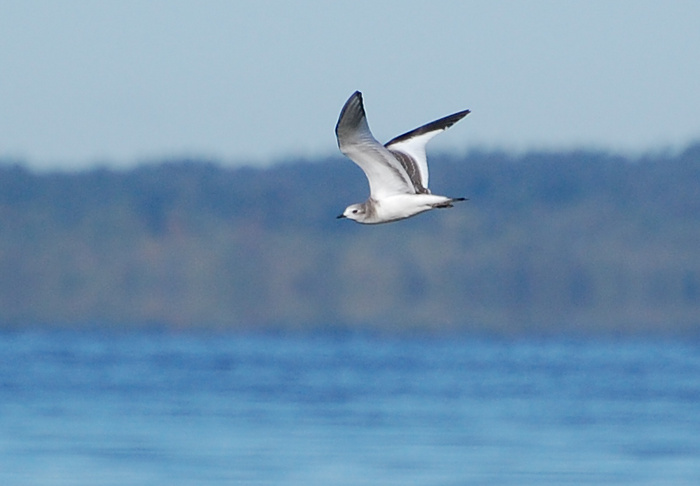
The petite, graceful Sabine's Gull breeds in the arctic and winters in the tropics, off the pacific coast of South America and the southwest coast of Africa. It is typically quite pelagic (ocean-loving) outside of the breeding season. Ottawa is, to say the least, not on its usual migration route. Perhaps this juvenile got a little disoriented?
Size comparison with Ring-Billed Gull (behind):
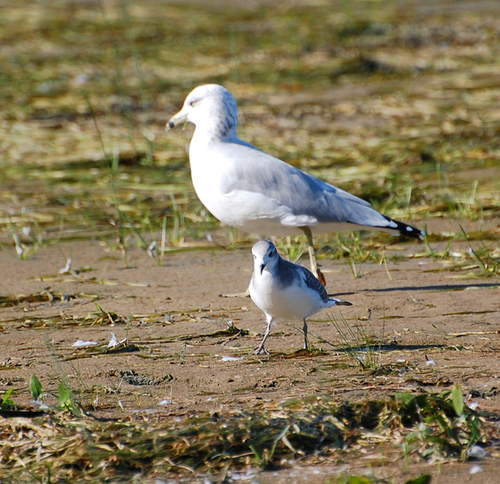
Montreal Biodome (4/4)
August 19th, 2011
The last of the (good) Biodome photos, all taken in the tropical ecosystem:
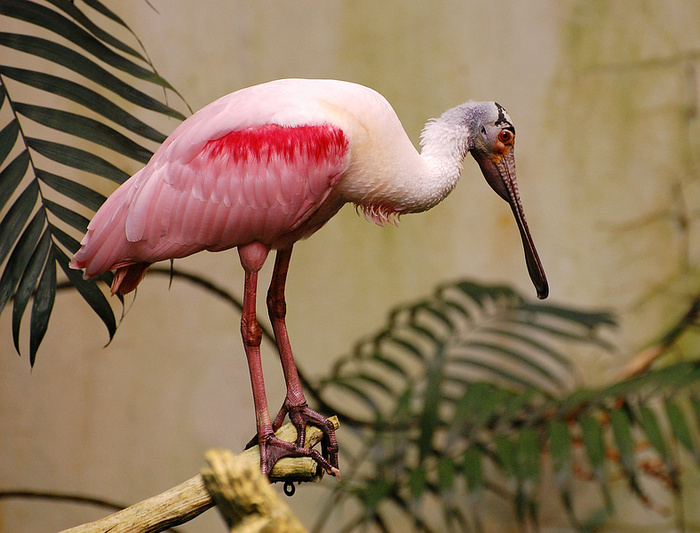
Roseate Spoonbill. This species' range actually extends up into the gulf region of the United States.

The Sunbittern seems a plain and unassuming fellow...
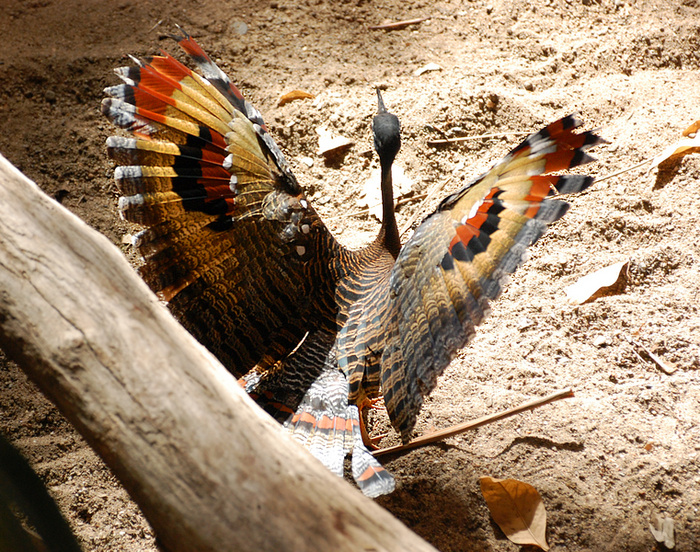
...until he spreads his wings, that is! The flamboyant "eyespots" are used in courtship and to startle potential predators. We got to see that second use in action when a caiman (alligator-like reptile) got a little too close for the sunbittern's liking.
Montreal Biodome (3/4)
August 18th, 2011
If you've ever been to the Biodome, you've probably seen a Grey-Winged Trumpeter, an extremely tame species found in the tropical ecosystem. They frequently come out on the path and run around underfoot.
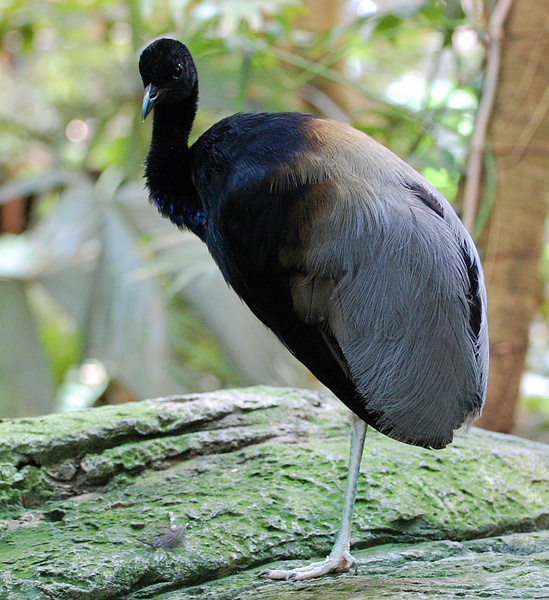
I'm not sure what these Hyacinth Macaws were up to, but it looked rather amorous!
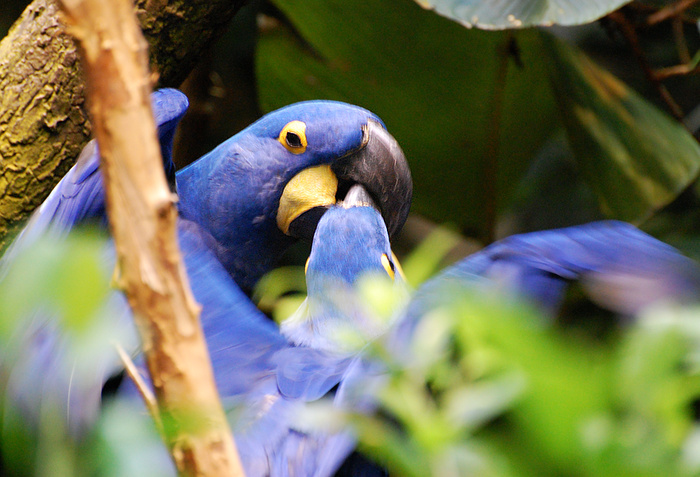
Montreal Biodome (2/4)
August 17th, 2011
The big birds and animals are what most people notice at the Biodome, but it's actually teeming with small songbirds too--especially in the tropical exhibit. Most of them stay in the canopy and are hard to see. But this Green Honeycreeper was the star of the day. He perched in plain view very close to me.

1680x1050 wallpaper

Goeldi's Marmoset
Montreal Biodome (1/4)
August 16th, 2011
I took a trip to the Biodome last week and got some photos.
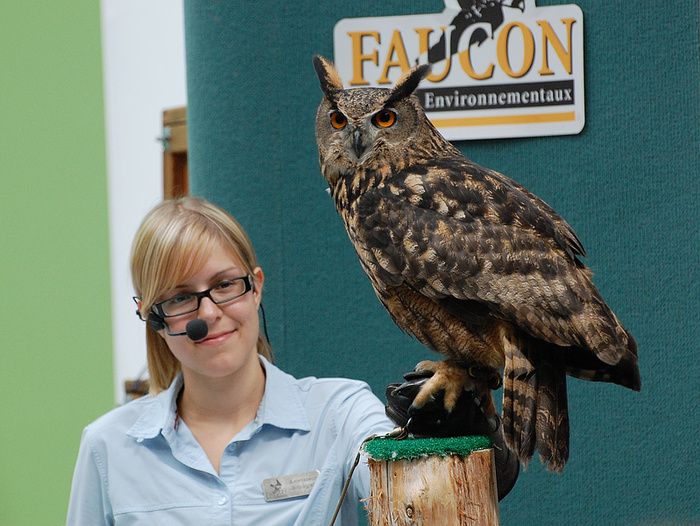
Great Horned Owl. Yes, he's real :-) This species is common in Ottawa, but I seldom get the opportunity to see one so close, or in such good lighting!
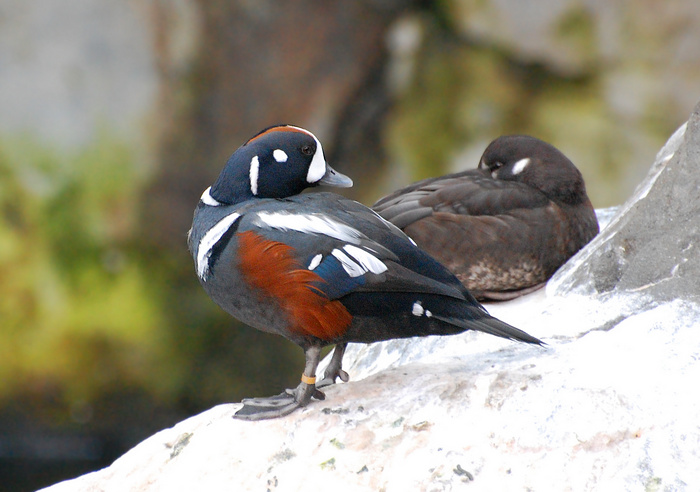
1680x1050 wallpaper
I've seen, in the wild, most of the ducks that breed in Canada. But the magnificent Harlequin Duck is one I'm still missing. Harlequins breed on fast-flowing mountain streams (primarily in the west) and winter on the coast--their mastery of rough water is second to none. A male/female pair is shown above.
Matching Colors
August 5th, 2011
I'm not usually a fly enthusiast, but this one enchanted me: metallic green and gold, with eyes as red as the meadowhawk perched next to it! If my research led me aright it's a Green Bottle Fly.
My telephoto really struggled with getting a focus on this. I keep pressing the poor thing into service as a macro lens, and in this case, I'm impressed with how well it did.
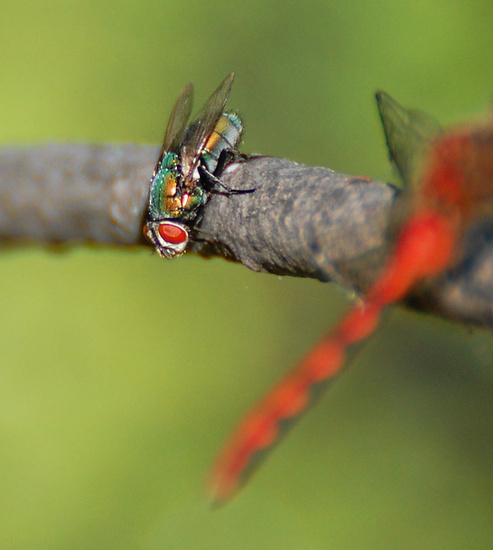
White-Faced Meadowhawk
August 3rd, 2011
If you see a bright red dragonfly in late summer or autumn, it's probably a meadowhawk. White-Faced is one of the most common of the seven species that occur in Ottawa.
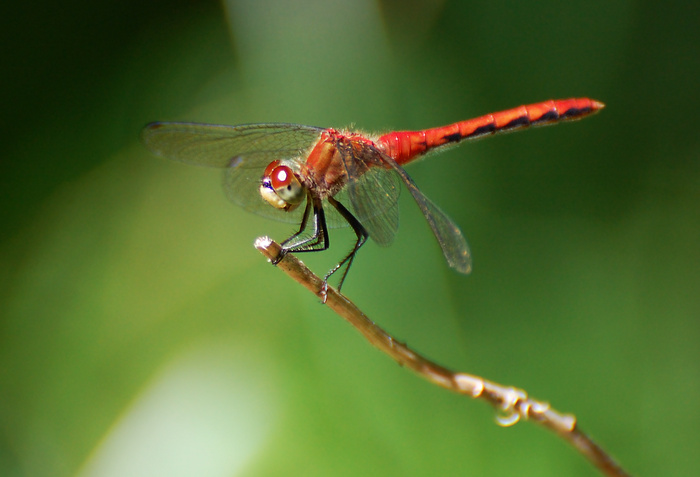
1680x1050 wallpaper
A Beautiful Spot
July 31st, 2011
A view of Chelsea Creek in the Gatineau, from Sugarbush Loop. Michael and I went there yesterday, sat at the waterside and watched jewelwings perch on the rocks.
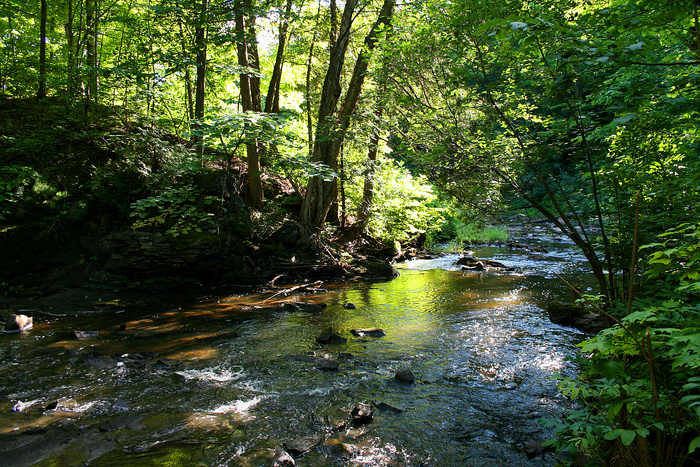
1680x1050 wallpaper
Steeplebush
July 29th, 2011
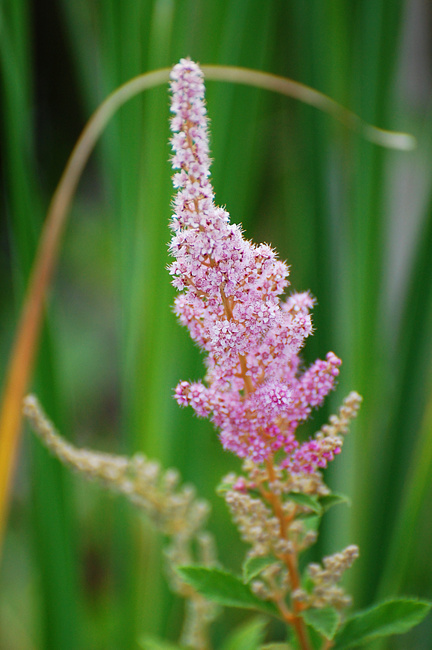
Ebony Jewelwing
July 28th, 2011
Sugarbush Loop is becoming one of my favorite hiking spots. Foremost of the reasons for this is its population of Ebony Jewelwings, a magnificent odonate. When you first see one fluttering around, it looks like a dark butterfly. Then it perches, revealing its vivid metallic blue-green body and its eponymous delicate ebony wings. Jewelwings prefer wooded streams and creeks, which is perhaps why they're not a common sight in Ottawa--our greenspace has a lot more marsh and pond than it does fast-flowing water. But in appropriate habitat, they occur in good numbers.
I was delighted to find one hunting for food on Chelsea Creek. He perched on grasses leaning over the water, and periodically sallied forth to snap up insects from the surface. He had a habit of returning to exactly the same position on exactly the same perch after one of his sallies, which was fortunate for me! Once I'd set the focus on my lens, it stayed good for some time.
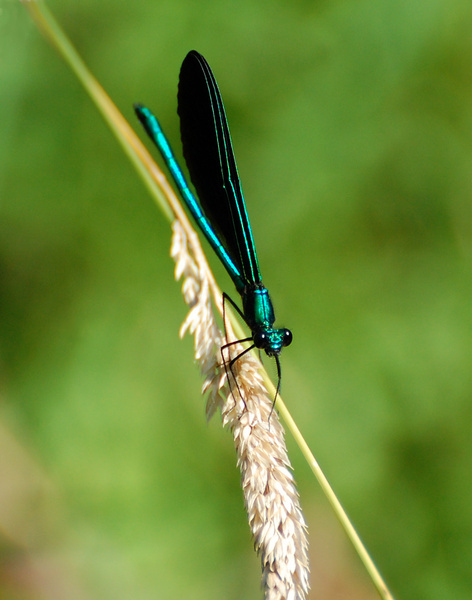
1680x1050 wallpaper
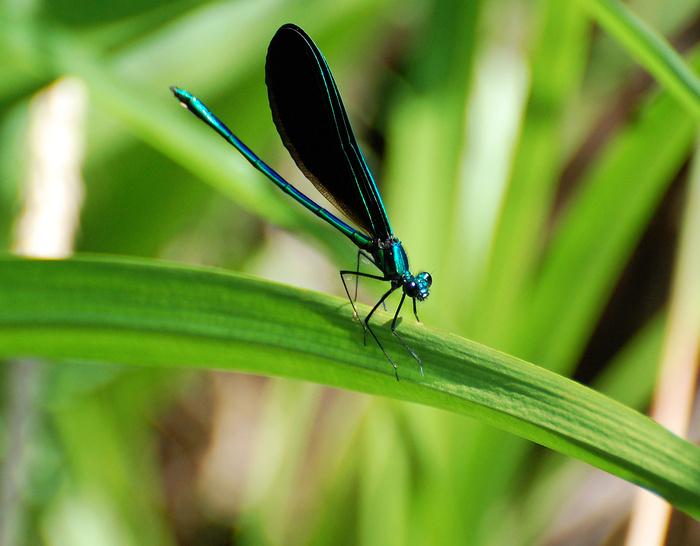
1680x1050 wallpaper
The females and juveniles are duller-colored, and have pale spots on the tips of their wings. My favorite female picture of the day is this rather startling flight shot.
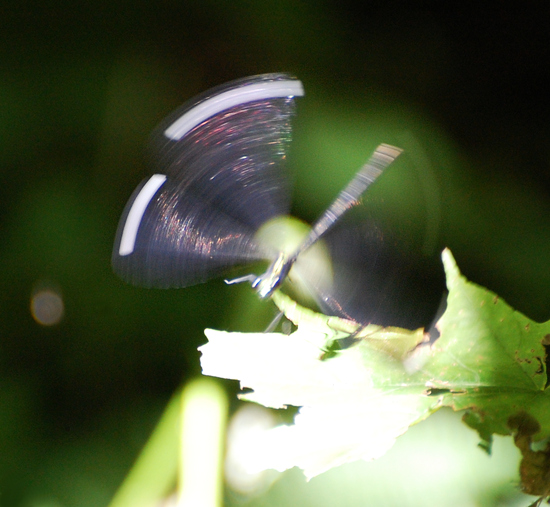
|
